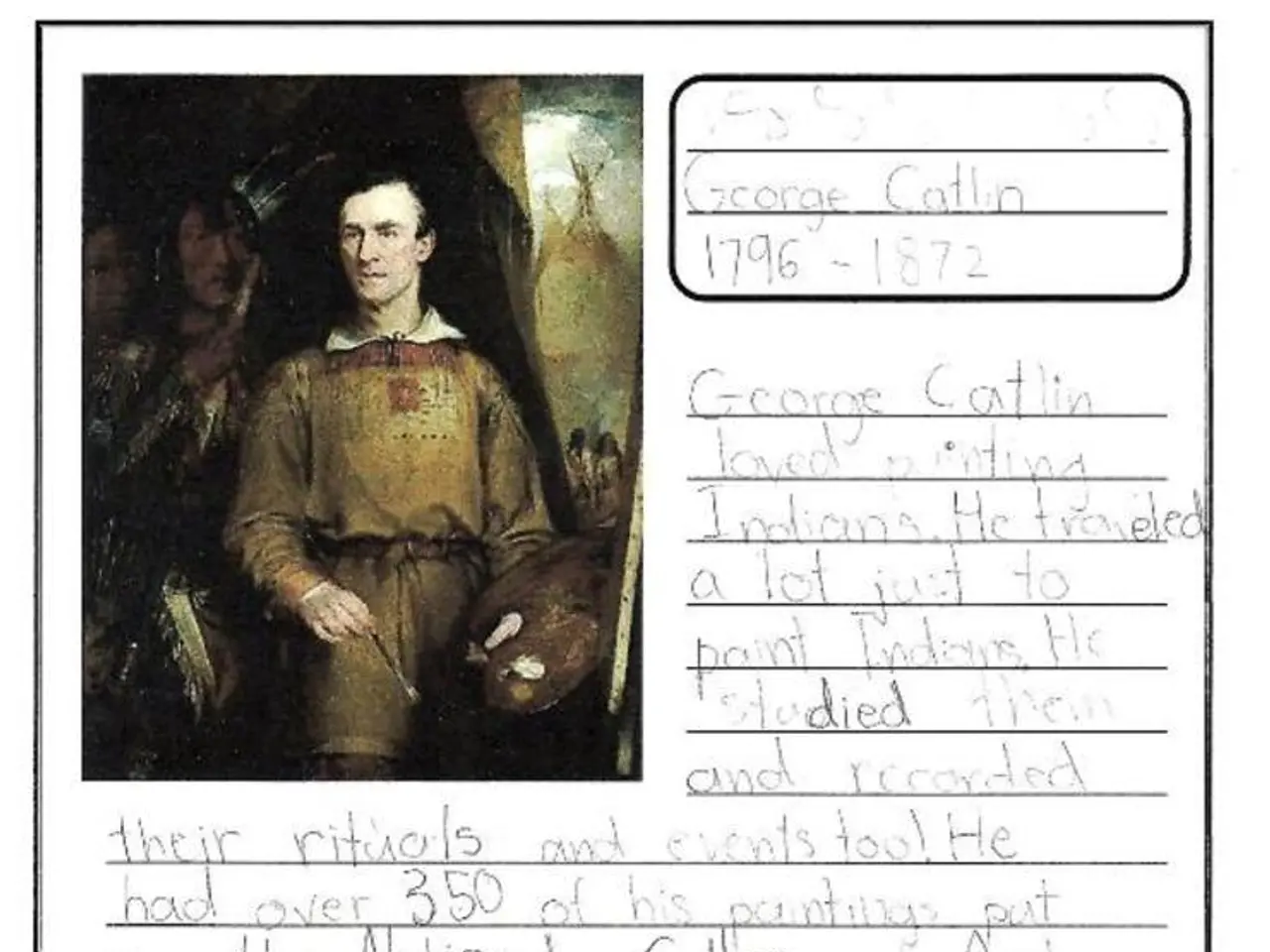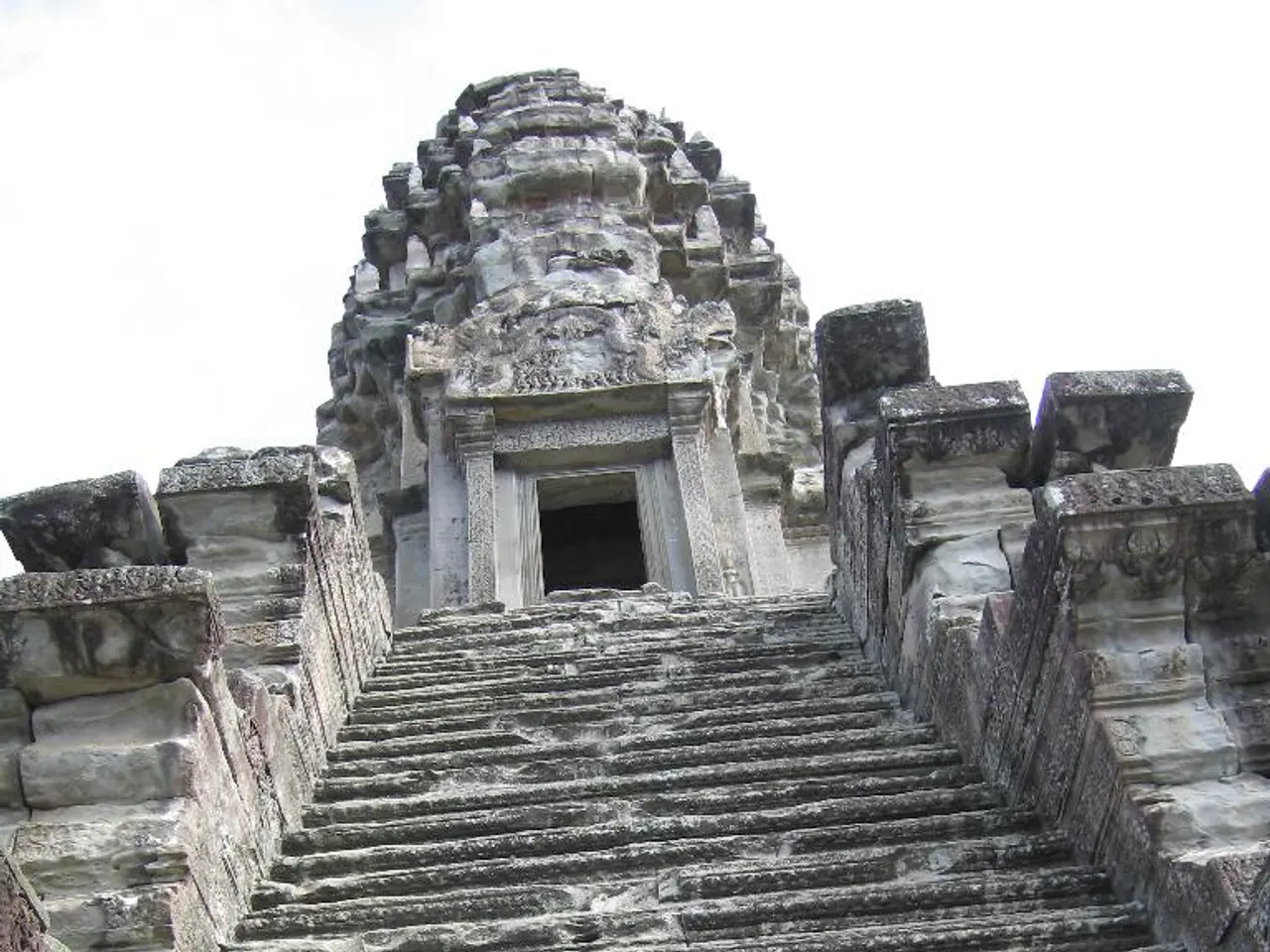Ancient 4500-year-old civilization discovered in Deeg, Rajasthan, by ASI
In the heart of Rajasthan, a captivating destination renowned for its grand forts, exquisite palaces, and lush gardens, lies the small town of Deeg. Recently, the Archaeological Survey of India (ASI) made a groundbreaking discovery that has significant implications for understanding India's ancient history.
The ASI has uncovered a 4,500-year-old ancient civilization in Bahaj village, Deeg district, Rajasthan. This discovery, which began on January 10, 2024, has yielded over 800 artefacts, including pottery, the oldest known seals inscribed with Brahmi script, copper coins, Yajna Kund, sculptures from the Mauryan period, and idols of Lord Shiva and Parvati, among others.
One of the key findings is a 23-metre-deep paleo-channel, believed to be linked to the legendary Saraswati River mentioned in the Rig Veda. This discovery is unprecedented in Indian archaeology and suggests that this ancient river system supported early human settlements in the area, connecting Bahaj to the broader Saraswati basin culture.
The excavation at Bahaj has reached approximately 23 metres in depth, making it the deepest archaeological dig ever undertaken in Rajasthan. The findings indicate continuous human activity and cultural development across multiple historical eras, revealing traces of five distinct periods — the Harappan post-period, the Mahabharata era, Mauryan, Kushan, and Gupta periods.
These findings challenge existing timelines, particularly concerning the origins of Indian coinage and Brahmi script. The site potentially rewrites key chapters in the understanding of ancient North Indian civilizations and their connection to Vedic culture.
The ASI has submitted a detailed report to the Ministry of Culture, recommending that the area be declared a National Archaeological Protected Area to conserve this rich heritage.
Visiting Deeg offers a chance to explore and reflect on its storied past. The Bharatpur Palace, showcasing a blend of Mughal and Rajput architecture, houses local artifacts. A short 32-kilometer trip from Deeg leads to the Bharatpur Bird Sanctuary, a UNESCO World Heritage site, which is a haven for both resident and migratory birdlife. Deeg Fort, also known as Jal Mahal, is situated near Deeg Palace, a masterpiece of Rajasthani architecture infused with Mughal elegance.
The nearest major railway station to Deeg is Bharatpur Junction, located about 32 kilometers from Deeg. The ideal time to visit Deeg is from September to March, after the monsoon season ends. These recent archaeological findings add to a series of important ASI discoveries across India, further enriching our understanding of the country's rich history.
Sources: [1] The Hindu, "ASI discovers 4,500-year-old civilization in Rajasthan's Deeg," January 15, 2024. [2] The Times of India, "ASI finds 4,500-year-old civilization in Deeg, Rajasthan," January 16, 2024. [3] India Today, "ASI unearths 4,500-year-old civilization in Deeg, Rajasthan," January 17, 2024. [4] The Indian Express, "ASI discovers 23-metre-deep paleo-channel linked to Saraswati River in Deeg, Rajasthan," January 20, 2024.
A traveler visiting Deeg can immerse themselves in its rich history, exploring the Bharatpur Palace and Deeg Fort, both showcasing intricate architectural styles and housing local artifacts. For those keen on understanding India's ancient lifestyle, a journey to Deeg, particularly in light of the Archaeological Survey of India's recent discovery of a 4,500-year-old civilization in Bahaj village, offers a unique opportunity to delve into the past and reflect on the continuous human activity and cultural development that has taken place over thousands of years.




